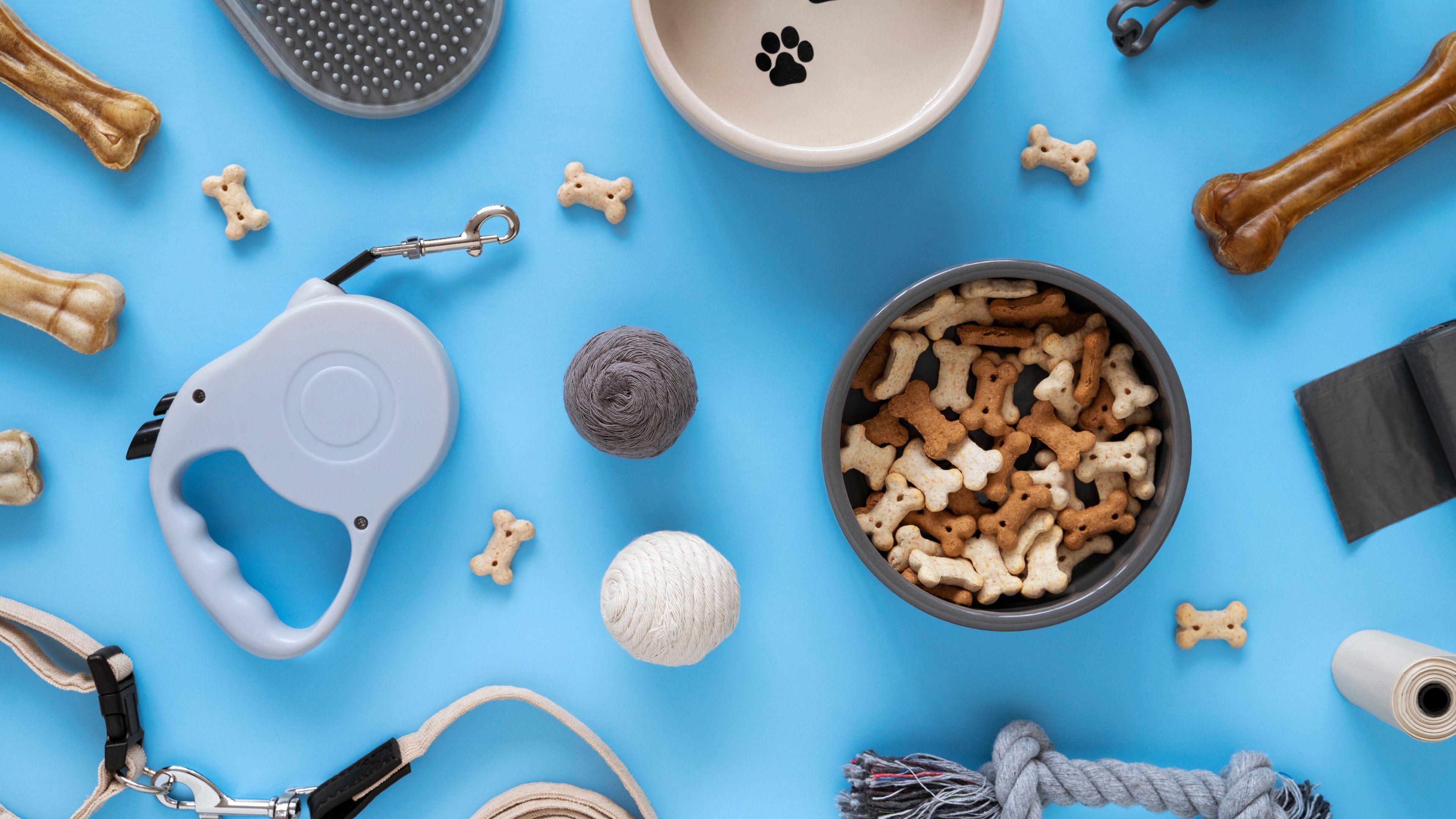Stop Your Dog From Chewing Furniture: 8 Effective Home Remedies
As a dog owner, it can be frustrating to come home and find your beloved furniture chewed up by your furry friend. Chewing is a natural behavior for dogs, but it can quickly become destructive when they target your favorite couch or dining chair. Fortunately, there are several home remedies you can use to stop dog chewing furniture and protect your belongings. In this article, we'll explore eight effective solutions that are safe, easy to implement, and budget-friendly.
Why Do Dogs Chew Furniture?
Before we dive into home remedies, it's essential to understand why dogs chew on furniture in the first place. There are several reasons why your dog might be engaging in this behavior:
- Teething: Puppies often chew to relieve the discomfort of teething.
- Boredom: Dogs with insufficient mental stimulation may chew to alleviate boredom.
- Anxiety: Some dogs chew as a coping mechanism for stress or anxiety.
- Lack of appropriate chew toys: If your dog doesn't have suitable chew toys, they may turn to furniture instead.
- Seeking attention: Dogs may chew on furniture to get your attention, even if it's negative attention.
Understanding the underlying cause of your dog's chewing can help you choose the most effective home remedy and address the issue at its root.
Home Remedy 1: Apple Cider Vinegar Spray
Apple cider vinegar (ACV) is a natural and safe home remedy to deter dogs from chewing furniture. The strong scent and bitter taste of ACV make it unappealing to most dogs. Here's how to create an ACV spray:
Materials:
- Apple cider vinegar
- Water
- Spray bottle
Steps:
- Mix one part apple cider vinegar with five parts water in a spray bottle.
- Test the solution on a small, hidden area of the furniture to ensure it doesn't cause damage or discoloration.
- Apply the mixture to the areas of the furniture your dog tends to chew.
- Reapply as needed, especially after cleaning the furniture.
Avoid spraying the solution directly on your dog, as it may cause irritation to their eyes or skin.
Home Remedy 2: Cayenne Pepper Spray
Cayenne pepper is another effective home remedy to stop dog chewing furniture. The spicy taste of cayenne pepper is unpleasant for most dogs, making it an excellent deterrent. Here's how to make a cayenne pepper spray:
Materials:
- 1 tablespoon cayenne pepper powder
- 1 quart water
- Spray bottle
Steps:
- Combine the cayenne pepper powder and water in a spray bottle and shake well.
- Test the solution on a small, inconspicuous area of the furniture to check for any adverse reactions.
- Apply the spray to the areas of the furniture your dog frequently chews.
- Reapply the spray regularly, especially after cleaning the furniture or if you notice your dog showing renewed interest in chewing.
Be cautious not to spray the solution near your dog's eyes or nose, as it may cause irritation. Store the spray bottle out of your dog's reach when not in use.
Home Remedy 3: Lemon Juice Solution
Dogs generally dislike the smell and taste of citrus, making lemon juice an excellent natural home remedy to discourage chewing. Here's how to create a lemon juice solution:
Materials:
- 1 lemon
- Water
- Spray bottle
Steps:
- Combine the juice of one lemon with one cup of water in a spray bottle.
- Shake the mixture well.
- Test the solution on a small, hidden area of the furniture to ensure it doesn't cause any damage or discoloration.
- Apply the lemon juice solution to the areas of the furniture your dog tends to chew.
- Reapply the solution periodically, especially after cleaning the furniture.
Avoid spraying the mixture directly on your dog, as the acidity of the lemon juice may cause irritation to their eyes or skin.
Home Remedy 4: Bitter Apple Spray
Bitter apple spray is a commercial product designed to deter dogs from chewing on various objects, including furniture. The spray contains a bitter taste that most dogs find unpleasant. Here's how to use bitter apple spray:
Materials:
- Bitter apple spray (available at pet stores or online)
Steps:
- Read the product label carefully and follow the manufacturer's instructions for use.
- Test the spray on a small, inconspicuous area of the furniture to ensure it doesn't cause any damage or discoloration.
- Apply the bitter apple spray to the areas of the furniture your dog frequently chews.
- Reapply the spray as directed by the manufacturer, typically every few days or after cleaning the furniture.
Be sure to keep the spray bottle out of your dog's reach when not in use.
Home Remedy 5: Provide Appropriate Chew Toys
One of the best ways to stop dog chewing furniture is to provide your dog with appropriate chew toys. By offering your dog suitable alternatives to chewing on furniture, you can redirect their natural chewing behavior to acceptable objects. Here are some tips for choosing the right chew toys:
- Select chew toys that are appropriately sized for your dog. Toys that are too small can pose a choking hazard, while toys that are too large may be difficult for your dog to handle.
- Choose chew toys made from durable materials that can withstand your dog's chewing. Look for toys made from rubber, nylon, or other strong materials.
- Offer a variety of chew toys with different textures, shapes, and sizes to keep your dog interested and engaged.
- Rotate your dog's chew toys regularly to maintain their novelty and appeal.
- Supervise your dog while they are chewing on toys to ensure they are using them safely and appropriately.
Home Remedy 6: Use Positive Reinforcement Training
Positive reinforcement training is an effective way to teach your dog acceptable behavior and discourage unwanted behavior, such as chewing furniture. Here's how to use positive reinforcement training to stop dog chewing furniture:
- Catch your dog in the act of chewing on an appropriate chew toy and immediately praise them with verbal encouragement and treats.
- If you catch your dog chewing on furniture, calmly redirect their attention to an appropriate chew toy. Once they start chewing on the toy, praise and reward them.
- Consistently reward your dog for chewing on appropriate toys and redirect them away from furniture.
- Use a specific command, such as "leave it" or "drop it," when redirecting your dog from chewing furniture. Reward them with praise and treats when they obey the command.
- Be patient and consistent with your training efforts. It may take time for your dog to learn acceptable chewing behavior.
Home Remedy 7: Manage Your Dog's Environment
Managing your dog's environment is an essential part of preventing unwanted chewing behavior. Here are some tips for creating a dog-friendly environment that discourages chewing furniture:
- Use baby gates or close doors to restrict your dog's access to rooms with tempting furniture.
- When you cannot actively supervise your dog, confine them to a crate or a designated "dog-proof" room with appropriate chew toys.
- Keep tempting items, such as shoes, books, and remote controls, out of your dog's reach.
- Provide your dog with a comfortable bed or designated resting area to encourage them to settle in appropriate locations.
- Ensure your dog gets plenty of exercise and mental stimulation to help prevent boredom-induced chewing.
Home Remedy 8: Address Underlying Anxiety
If your dog's chewing behavior is related to anxiety or stress, it's essential to address the underlying issue to effectively stop dog chewing furniture. Here are some strategies for helping an anxious dog:
- Create a consistent daily routine for your dog, including regular mealtimes, walks, and playtime.
- Provide a safe, quiet space for your dog to retreat to when they feel anxious, such as a crate or a designated room.
- Use calming aids, such as pheromone diffusers or calming chews, to help reduce your dog's anxiety levels.
- Consider engaging your dog in calming activities, such as puzzle toys or nose work, to help relieve stress and anxiety.
- If your dog's anxiety is severe or persists despite your efforts, consult with a veterinarian or a professional dog trainer for additional guidance.
Take Away
Chewing furniture is a common problem among dog owners, but it doesn't have to be a permanent issue. By using these eight home remedies and understanding the underlying reasons for your dog's chewing behavior, you can effectively stop dog chewing furniture and protect your belongings. Remember to be patient, consistent, and positive in your approach, and always prioritize your dog's safety and well-being. With time and effort, you can help your dog develop appropriate chewing habits and enjoy a harmonious home together.










Leave a comment